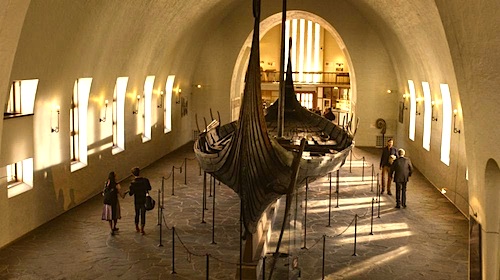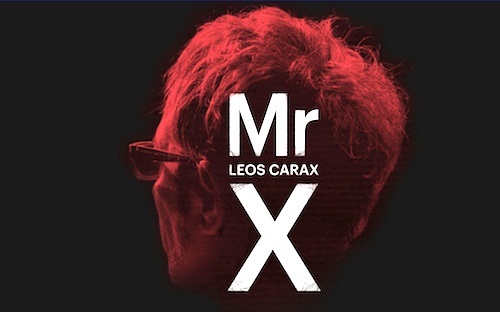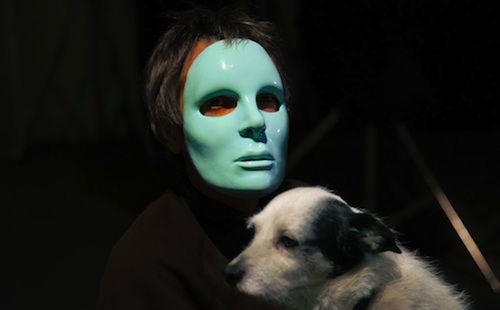By Joe Bendel. The Oseberg Viking ship was an extraordinary archaeological find. It remains one of the best preserved vessels, but it has not exactly boosted the reputation of Viking nautical engineering, considering two modern facsimiles have proved unseaworthy. Nevertheless, an absent-minded archaeologist is convinced the Oseberg ship ventured all the way up to Norway’s Finnmark region. He also believes they witnessed something that inspired the apocalyptic Norse myths, so naturally he drags his bratty kids along to investigate. They will definitely find something in Mikkel Brænne Sandemose’s Ragnarok, which launches on VOD today.
The Viking Ship Museum display of the Oseberg craft is quite dramatic. Unfortunately, the widower-father Sigurd Svendsen has essentially talked himself out of a job there with all his crazy theories. However, when his reckless co-worker Allan discovers a corroborating artifact, Svendsen packs up his petulant daughter Ragnhild and devoted son Brage to spend their summer vacation scouring for more runes in exciting Finnmark.
Naturally, Ragnhild is not too thrilled about these plans, but the spectacular scenery briefly shuts her up. They quickly meet up with Elizabeth, Allan’s “cool chick” colleague, and their hard drinking guide Leif, who is clearly just itching to yell “throw me the idol and I’ll throw you the whip.” There are headed towards Odin’s Eye, an island in the middle of former Soviet border outpost, where viewers know Queen Åsa’s father met with a painful death centuries ago in the prologue. Could there be some truth to the legend of the Midgard serpent Jörmungandr? That might explain why there’s a snake on the poster.
Frankly, one of the best things about Ragnarok is the setting. The suspiciously deserted Soviet military base is pretty creepy and the Odin’s Eye isle is worthy of a Peter Jackson Tolkien movie. Unfortunately, the creature effects are completely lacking the awe factor. Worse still is all the Svendsen family drama we have to sit through.

Apparently, Pål Sverre Hagen is Norway’s go-to actor for adventurous academics, following-up his portrayal of Thor Heyerdahl in the Oscar nominated Kon-Tiki with his turn as Svendsen. He is appealing earnest as the naïve archaeologist and he develops some pleasantly flirtatious chemistry with Sofia Helin’s hip and sporty Elizabeth. However, the kids are like fingernails on a blackboard.
Given the success of Marvel’s Thor franchise and History Channel’s Vikings, it is not surprising Norse mythology is getting a look-see from more filmmakers. Sandemose certainly proves fjords are strikingly cinematic, but he never fully capitalizes on the Ragnarok mythos or the Oseberg backstory. Instead, he concentrates on emulating the most annoying parts of Jurassic Park. There are moments of promise in Ragnarok, but it never comes together, at least not for reasonably adult audiences. Nevertheless, it is now available for Norse mythology fans to try on VOD from Magnolia/Magnet. It also opens theatrically next Friday (8/22) in Santa Fe at the Jean Cocteau Cinema.
LFM GRADE: C+
Posted on August 15th, 2014 at 12:14pm.

